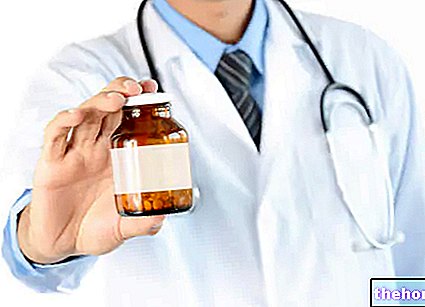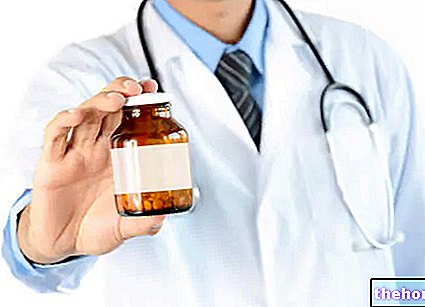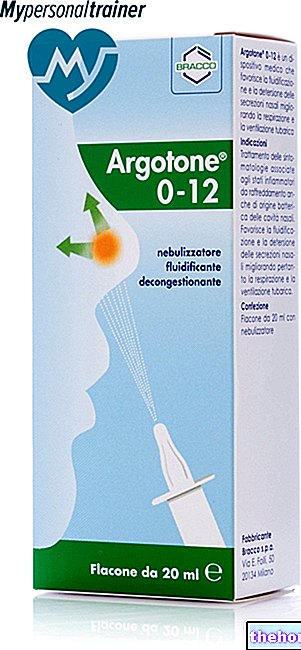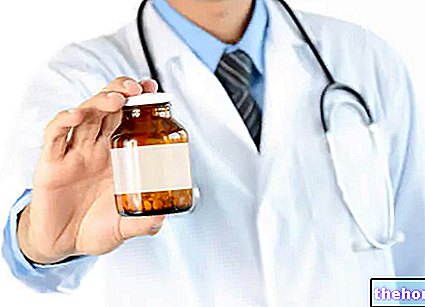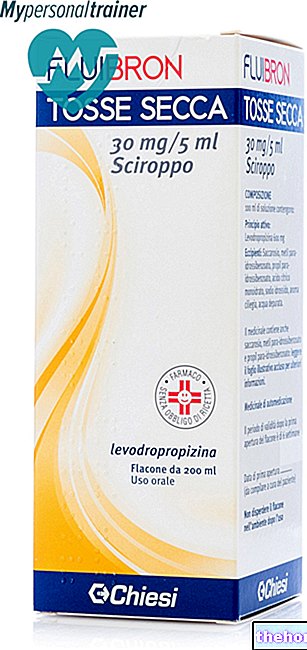Active ingredients: Doxofylline
"400 mg tablets" 20 tablets - "200 mg powder for oral solution" 20 sachets - "100mg / 10ml
solution for injection for intravenous use "3 ampoules -" 20 mg / ml syrup "200ml bottle
Why is Ansimar used? What is it for?
PHARMACOTHERAPEUTIC CATEGORY
Xanthine derivative, anti-asthmatic for systemic use.
THERAPEUTIC INDICATIONS
- Bronchial asthma
- Pulmonary affections with bronchial spastic component.
Contraindications When Ansimar should not be used
The ANSIMAR preparation is contraindicated in subjects with known hypersensitivity to the drug or to other xanthine derivatives, in case of acute myocardial infarction, in hypotensive states and during lactation.
Precautions for use What you need to know before you take Ansimar
ANSIMAR must not be administered together with other xanthine preparations. Moderate use of caffeinated beverages and foods is recommended. The association between ANSIMAR and ephedrine or other sympathomimetics requires caution.
Administration should be done with caution in cardiac patients, hypertensive patients, the elderly and in patients with severe hypoxemia, hyperthyroidism, chronic cor pulmonale, congestive heart failure, liver disease, peptic ulcer and in patients with poor renal function. In particular, it should be used with caution in patients with congestive heart failure as in these patients there is a significant slowdown in the clearance of the drug with persistence for long periods even after the suspension of high blood levels.
Interactions Which drugs or foods can modify the effect of Ansimar
Numerous factors can reduce the hepatic clearance of xanthine derivatives with increases in plasma drug levels.These include age, congestive heart failure, chronic obstructive lung disease, severe liver disease, concomitant infections, concomitant administration of many drugs such as erythromycin, TAO, lincomycin, clindamycin, allopurinol, cimetidine, influenza vaccine, Propranolol. In these cases it may be necessary to reduce the dosage of the drug. Phenytoin, other anticonvulsants and cigarette smoking can increase the clearance of xanthine derivatives with a reduction in plasma half-life. In these cases it may be necessary to increase the dosage of the drug.
In case of factors that may affect the clearance of xanthine derivatives, it is recommended to monitor the concentration of the blood levels of the drug in order to control the therapeutic range.
Warnings It is important to know that:
Use in pregnancy: the investigations carried out on the animal have indicated that the active ingredient of the ANSIMAR preparation does not interfere with pre and post natal development. However, as there is not sufficient clinical experimentation in pregnancy, the use of the drug during gestation must be carefully evaluated case by case according to the risk-benefit criterion.
The preparation does not modify the integrity of the degree of vigilance so it does not compromise the driving of motor vehicles and the use of machines that require quick reflexes.
For those who carry out sporting activities, the use of medicines containing ethyl alcohol can determine positive doping tests in relation to the alcohol concentration limits indicated by some sports federations.
KEEP OUT OF THE REACH AND SIGHT OF CHILDREN
Dosage and method of use How to use Ansimar: Dosage
- 400 mg Tablets: 1 tablet two / three times a day in adults.
- 100mg / 10ml solution for injection for intravenous use: in adults 2 intravenous ampoules administered to patients in supine position and slowly (15-20 minutes), preferably diluted, in the acute phase. Administration can be repeated every 12 hours, in the opinion of the doctor.
- 200 mg powder for oral solution: school-age children (6-12 years) 1-3 sachets per day (12-18 mg / kg), dissolved in plenty of water.
- 20mg / ml Syrup: 1 scoop of 20ml two / three times a day (one scoop of 20ml corresponds to 400 mg of doxofylline).
At the recommended dosage, plasma levels of doxofylline generally do not exceed 20 µg / ml, therefore it is not necessary to periodically check these levels.
In the event of an increase in this dosage, it is necessary to check the blood levels of the drug (therapeutic values around 10 µg / ml, values at the toxicity limits of 20 µg / ml)
Overdose What to do if you have taken too much Ansimar
As there is no specific antidote, symptomatic treatment of cardiovascular collapse should be resorted to in the event of an overdose.
Side Effects What are the side effects of Ansimar
With the use of xanthine derivatives, nausea, vomiting, epigastric pain, headache, irritability, insomnia, tachycardia, extrasystole, tachypnea and occasionally hyperglycemia and albuminuria may occur. In case of overdose, severe cardiac arrhythmias and tonic-clonic seizures may appear. manifestations can be the first signs of intoxication.
The appearance of side effects may require the suspension of the treatment which, if necessary, in the opinion of the doctor, can be resumed at lower doses after the disappearance of all signs and symptoms of toxicity.
Any undesirable effect not described must be promptly reported to the attending physician or pharmacist.
Expiry and Retention
ATTENTION: see the expiry date printed on the package. Do not use the product after this date.
Deadline "> Other information
COMPOSITION
400 mg Tablets
Each tablet contains:
- Active ingredient Doxofylline 400 mg
- Excipients colloidal anhydrous silica, colloidal hydrated silica, pregelatinised maize starch, lactose monohydrate, polyvinylpyrrolidone, microcrystalline cellulose and sodium carboxymethylcellulose, talc, magnesium stearate.
100mg / 10ml solution for injection for intravenous use
Each 10ml vial contains:
- Active ingredient Doxofylline mg 100
- Excipient Distilled water to taste at 10 ml
200 mg powder for oral solution (pediatric use)
Each sachet contains:
- Active ingredient Doxofylline mg 200
- Excipients Sucrose, glycyrized ammonium, mint essence
20 mg / ml syrup
100 ml of syrup contain:
- Active ingredient Doxofilllina g 2
- Excipients Sucrose, ethyl alcohol, methyl p-hydroxybenzoate, mint essence, glycyrized ammonium, purified water to taste
PHARMACEUTICAL FORM, PACKAGING
- 400 mg tablets, box of 20 tablets.
- 100 mg / 10 ml ampoules, box of 3 ampoules.
- 200 mg sachets, box of 20 sachets.
- 20 mg / ml Syrup, 200 ml bottle.
Source Package Leaflet: AIFA (Italian Medicines Agency). Content published in January 2016. The information present may not be up-to-date.
To have access to the most up-to-date version, it is advisable to access the AIFA (Italian Medicines Agency) website. Disclaimer and useful information.
01.0 NAME OF THE MEDICINAL PRODUCT -
ANSIMAR
02.0 QUALITATIVE AND QUANTITATIVE COMPOSITION -
400 mg tablets
Each tablet contains:
Active principle
Doxofylline 400 mg
Vials
Each 10ml vial contains:
Active principle
Doxofylline 100 mg
Sachets (pediatric use)
Each sachet contains:
Active principle
Doxofylline 200 mg
Syrup
100 ml of syrup contain:
Active principle
Doxofylline g 2
Miniflebus phial (hospital use)
A 100 ml vial contains:
Active principle
Doxofylline 300 mg
For excipients see 6.1
03.0 PHARMACEUTICAL FORM -
400 mg tablets
100 mg / 10 ml ampoules
200 mg sachets, pediatric use
2 g / 100 ml syrup
Miniflebus, 1 vial of 300 mg / 100 ml (hospital use)
04.0 CLINICAL INFORMATION -
04.1 Therapeutic indications -
Bronchial asthma.
Pulmonary affections with bronchial spastic component.
04.2 Posology and method of administration -
400 mg tablets: 1 tablet two / three times a day in adults
100 mg ampoules: in adults 2 ampoules intravenously
administered to patients in supine position and slowly (15-20 minutes), preferably diluted, in the acute phase. Administration can be repeated every 12 hours, in the opinion of the doctor.
200 mg sachets: school-age children (6-12 years):
1-3 sachets per day (12-18 mg / kg) dissolved in plenty of water.
2% syrup: 1 scoop of 20 ml two / three times a day in adults (1 scoop of 20 ml corresponds to 400 mg of doxofylline)
Miniflebus 300 mg vial: intravenously in slow drip under medical supervision, to be administered only in adults.
At the recommended dosage, plasma levels of doxofylline generally do not exceed 20 mcg / ml, therefore it is not necessary to periodically check these levels.
In case of increase of this dosage it is necessary to resort to the control of the blood levels of the drug (therapeutic values around 10 mcg / ml, values at the limits of toxicity 20 mcg / ml).
04.3 Contraindications -
The ANSIMAR preparation is contraindicated in subjects with known hypersensitivity to the drug or to other xanthine derivatives, in case of acute myocardial infarction, in hypotensive states and during lactation.
04.4 Special warnings and appropriate precautions for use -
Numerous factors can reduce the hepatic clearance of xanthine derivatives with increases in plasma drug levels. These include age, congestive heart failure, chronic obstructive lung disease, severe liver disease, concomitant infections, the simultaneous administration of many drugs such as: erythromycin, OAT, lincomycin, clindamycin, allopurinol, cimetidine, influenza vaccine , propranolol In these cases it may be necessary to reduce the dosage of the drug.
Phenytoin, other anticonvulsants and cigarette smoking may increase the clearance of xanthine derivatives with reduced plasma half-life. In these cases it may be necessary to increase the dosage of the drug.
In case of factors that may affect the clearance of xanthine derivatives, it is recommended to monitor the concentration of the blood levels of the drug in order to control the therapeutic range.
Administration of the product should be done with caution in cardiac patients, hypertensive patients, the elderly and in patients with severe hypoxemia, hyperthyroidism, chronic cor pulmonale, congestive heart failure, liver disease, peptic ulcer and in patients with poor renal functions. In particular, it should be used with caution in patients with congestive heart failure as in these patients there is a notable slowdown in the clearance of the drug, with persistence for long periods, even after discontinuation of treatment, of high blood levels.
There is no risk of addiction, dependence or anything else.
KEEP OUT OF THE REACH AND SIGHT OF CHILDREN
04.5 Interactions with other medicinal products and other forms of interaction -
ANSIMAR must not be administered together with other xanthine preparations. Moderate use of caffeinated beverages and foods is recommended.
The association between ANSIMAR and ephedrine or other sympathomimetics requires caution.
The simultaneous administration of many drugs such as erythromycin, TAO, lincomycin, clindamycin, allopurinol, cimetidine, influenza vaccine, propranolol can reduce the hepatic clearance of xanthine derivatives with increase in plasma levels of the drug.
Phenytoin, other anticonvulsants and cigarette smoking may increase the clearance of xanthine derivatives with reduced plasma half-life. In these cases it may be necessary to increase the dosage of the drug.
04.6 Pregnancy and breastfeeding -
The investigations carried out on the animal have shown that the active ingredient of the ANSIMAR preparation does not interfere with pre- and post-natal development.
However, as there is insufficient clinical trial in pregnancy, the use of the drug during gestation must be carefully evaluated case by case according to the risk-benefit criterion. The drug is contraindicated during breastfeeding.
04.7 Effects on ability to drive and use machines -
The preparation does not modify the integrity of the degree of vigilance so it does not compromise the driving of motor vehicles and the use of machines that require quick reflexes.
04.8 Undesirable effects -
With the use of xanthine derivatives, nausea, vomiting, epigastric pain, headache, irritability, insomnia, tachycardia, extrasystole, tachypnea and occasionally hyperglycemia and albuminuria may occur. In case of overdose, severe cardiac arrhythmias and tonic-clonic seizures may occur. manifestations can be the first signs of intoxication.
The appearance of side effects may require the suspension of the treatment which, if necessary in the judgment of the doctor, can be resumed at lower doses after the disappearance of all signs and symptoms of toxicity.
04.9 Overdose -
As there is no specific antidote, symptomatic treatment of cardiovascular collapse should be resorted to in the event of an overdose.
05.0 PHARMACOLOGICAL PROPERTIES -
05.1 "Pharmacodynamic properties -
Doxofylline acts directly on the smooth muscles of the bronchi and pulmonary vessels in a muscle relaxant sense. In this way it acts mainly as a bronchodilator, pulmonary vasodilator and muscle relaxant of the bronchial muscles.
The action of doxofylline can be mediated, at least in part, by the inhibition of phosphodiesterase with the consequent increase in the intracellular concentration of cyclic AMP which causes smooth muscle relaxation.
At higher concentrations doxofylline can inhibit cell breakdown of histamine.
Prolonged use of the drug is not addictive.
05.2 "Pharmacokinetic properties -
The half-life of doxofylline is greater than 6 hours, so as to allow constant effective plasma levels with three administrations per day.
The kinetics in humans after a single intravenous and oral administration were studied to define the distribution and absorption characteristics of the drug.
After intravenous administration of 100 mg of doxofylline to 5 volunteers, the serum distribution of the unchanged substance follows a two-compartment pattern.
The area under the serum concentration curve in the distribution phase constitutes a small fraction of the total area.
Plasma clearance is high with values ranging from 444 to 806 mL / min and the volume of distribution is approximately 1 L / kg.
The mean half-life after intravenous administration was calculated as 65 minutes (40 to 96).
After administration of the tablet pharmaceutical form the maximum levels in the plasma are reached after 60 minutes, while with the syrup pharmaceutical form, due to the hydroalcoholic vehicle, there is a more rapid absorption, with a maximum concentration occurring within 30 minutes.
The absolute bioavailability by oral route is about 62.6%; at pH 7.4 the percentage of product bound to plasma proteins is about 48%.
Less than 4% of the orally administered dose is excreted unchanged in the urine.
05.3 Preclinical safety data -
Acute toxicity
LD50 in rats and mice treated orally, intraperitoneally and intravenously:
Oral administration: in rats = 1022.4 mg / kg
in mice = 841.0 mg / kg
Intraperitoneal administration: in the rat = 444.7 mg / kg
Intravenous administration: in the rat m. = 360 mg / kg
in the rat f. = 310 mg / kg
in the mouse m. = 245 mg / kg
in the mouse f. = 238 mg / kg
Acute toxicity in oral and i.p. beagle dogs
Oral administration: higher than 800 mg / kg
Administration i.p .: 400 mg / kg
Subacute toxicity (three months) - per os
In male and female rats at the doses:
7.21 mg / kg - 57.66 mg / kg - 288.40 mg / kg orally;
in the male rat at the doses:
3.625 mg / kg - 29 mg / kg - 145 mg / kg intraperitoneally;
in female rats at the dose:
3.625 mg / kg intraperitoneally;
in male and female beagle dogs at doses:
180 mg / kg - 60 mg / kg - 20 mg / kg orally
no noteworthy changes were observed.
Chronic toxicity (six months) -
In the male rat at the doses:
7.21 mg / kg - 57.66 mg / kg - 288.4 mg / kg orally;
in female rats at doses:
7.21 mg / kg - 288.4 mg / kg orally;
in the male rat at the doses:
3.625 mg / kg - 29 mg / kg - 145 mg / kg intraperitoneally;
in female rats at the dose:
145 mg / kg intraperitoneally;
in male and female beagle dogs at doses:
180 mg / kg - 60 mg / kg - 20 mg / kg
the preparation was well tolerated and devoid of toxic action.
Subacute toxicity (1 month) - i.v.
In male and female rabbits at the doses:
57.68 mg / kg - 28.84 mg / kg - 7.21 mg / kg intravenously
the preparation was suitable for prolonged administration via the venous route.
The preparation was found to be devoid of fetal toxicity following tests performed in rats and rabbits at the following doses:
- in rats: 57.66 mg / kg orally
29 mg / kg for i.p.
- in rabbits: 7.21 mg / kg - 28.84 mg / kg - 115.36 mg / kg orally.
The preparation had no effect on fertility, pre and postnatal development and lacked a teratogenic action in the rat.
Doxofylline was also found to be devoid of mutagenic activity.
06.0 PHARMACEUTICAL INFORMATION -
06.1 Excipients -
400 mg tablets
Lactose monohydrate, microcrystalline cellulose and sodium carboxymethylcellulose, pregelatinised corn starch, colloidal anhydrous silica, colloidal hydrated silica, talc, magnesium stearate, Povidone K30
Vials
Distilled water.
Sachets for pediatric use
Sucrose, glycyrized ammonium, mint essence.
Syrup
Sucrose, ethyl alcohol, methyl p-hydroxybenzoate, mint essence, glycyrized ammonium, purified water.
Miniflebus
Distilled water
06.2 Incompatibility "-
For none of the pharmaceutical forms provided, incompatibilities with other substances have been reported.
06.3 Period of validity "-
400 mg tablets: 60 months
Vials: 36 months
Sachets for pediatric use: 36 months
Miniflebus: 36 months
Syrup: 5 years
06.4 Special precautions for storage -
The preparation must be stored "in the ordinary ambient conditions" foreseen by the F.U.IX Ed.
06.5 Nature of the immediate packaging and contents of the package -
ANSIMAR tablets 400 mg:
the tablets are packaged in blisters of PVC coupled with aluminum, inserted in a lithographed cardboard box, together with the package leaflet.
Box of 20 tablets of 400 mg
ANSIMAR vials:
the vials, in neutral glass of hydrolytic class 1, are inserted in a special container of thermoformed plastic material, enclosed, together with the illustrative sheet, in a lithographed rigid cardboard box.
Box of 3 vials of 100 mg / 10 ml
ANSIMAR sachets for pediatric use:
the sachets, in polythene aluminum, are inserted, together with the leaflet, in a lithographed rigid cardboard box.
Box of 20 sachets of 200 mg.
ANSIMAR syrup:
the syrup is contained in a brown glass bottle, closed with a child-resistant cap with an attached measuring cup.
The bottle is inserted, together with the leaflet and a 20 ml graduated measuring cup, in a lithographed rigid cardboard box.
200ml bottle of 2% syrup
ANSIMAR miniflebus:
100 ml miniflebo vial, in neutral glass, for hospital use.
06.6 Instructions for use and handling -
The preparation can be handled without particular precautions. See method of administration.
07.0 HOLDER OF THE "MARKETING AUTHORIZATION" -
ABC FARMACEUTICI S.P.A.
COURSE VITTORIO EMANUELE II, 72
10121 TURIN
08.0 MARKETING AUTHORIZATION NUMBER -
ANSIMAR 20 tablets - code N.025474014
ANSIMAR 3 vials i.v. - code N.025474040
ANSIMAR 20 sachets - code N.025474038
ANSIMAR syrup - code N.025474065
ANSIMAR miniflebo - code N.025474053
09.0 DATE OF FIRST AUTHORIZATION OR RENEWAL OF THE AUTHORIZATION -
ANSIMAR 20 tablets: 10/30/84
ANSIMAR 3 vials i.v .: 10/30/84
ANSIMAR 20 sachets: 10/30/84
ANSIMAR miniflebo: 10/30/84
ANSIMAR syrup: 27/04 / 91-
10.0 DATE OF REVISION OF THE TEXT -
March 2011

